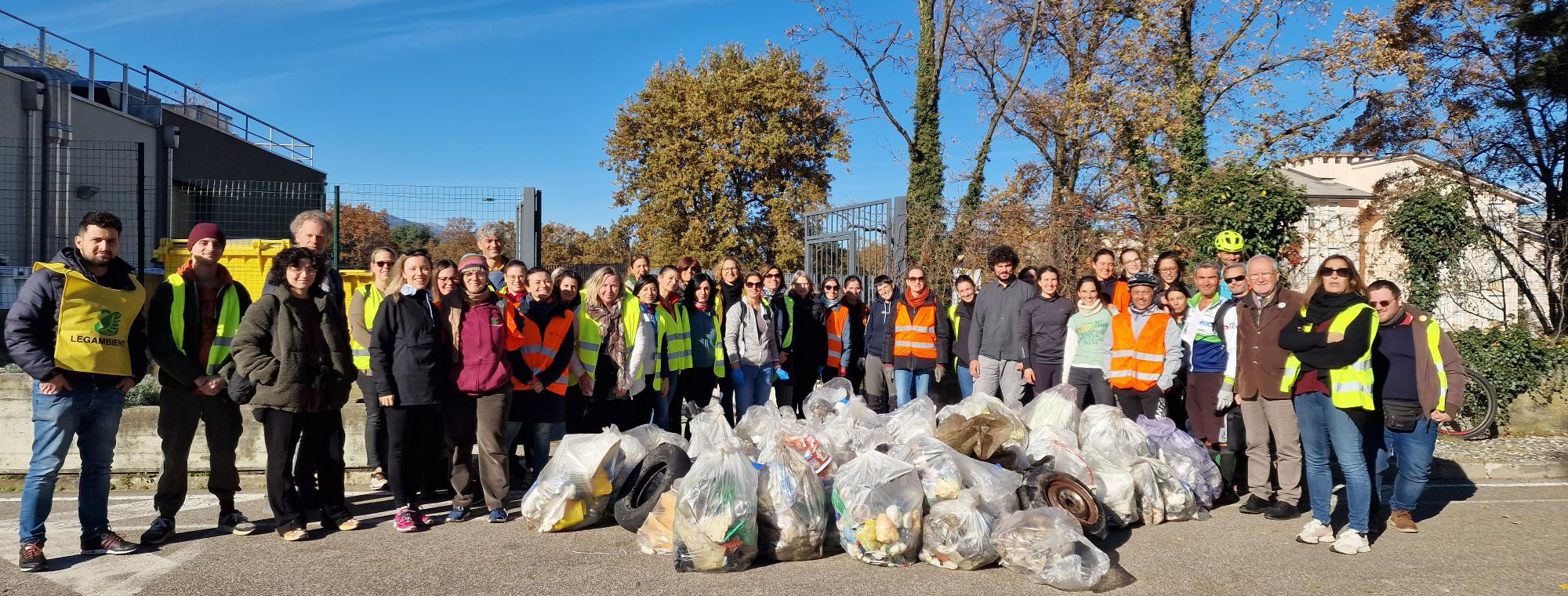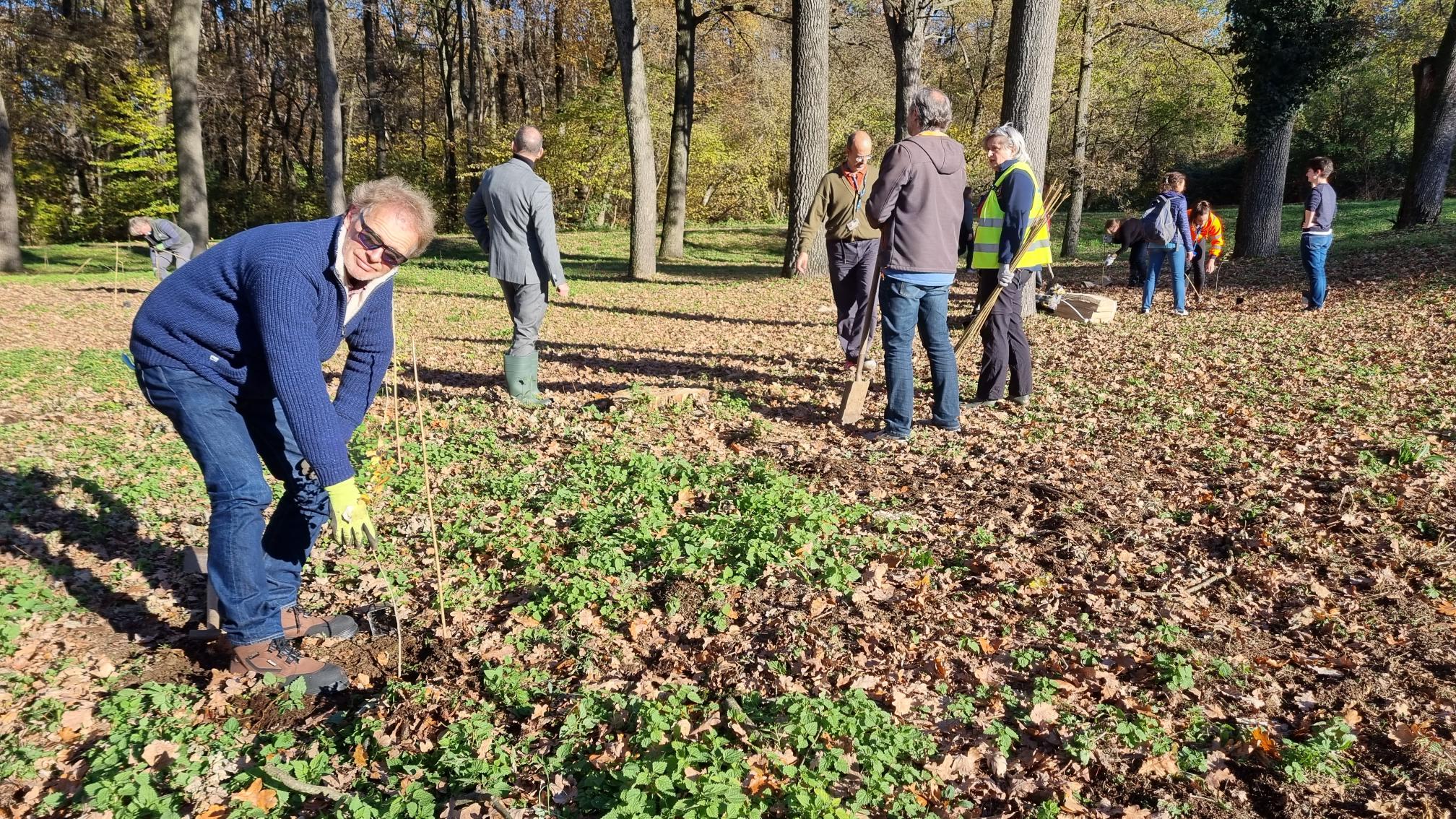
Case study
Case Study: level-ing up JRC buildings' performances
Level(s) is the European Framework for Sustainable Buildings developed by the JRC, It is an assessment and reporting tool for the sustainability performance of buildings. It is closely affiliated with the goals of the European Green Deal for a sustainable building sector, and part of the actions described in the new Circular Economy Action Plan and the Renovation Wave Strategy. It was developed as one of the important elements of the New European Bauhaus (NEB) initiative.
There are several sustainable practices of Level(s) at the JRC such as in Seville where candidates of the international architectural design contest for the new building were asked to include reports based on the Level(s) checklist in their proposals. Also in Geel, Level(s) is used for the refurbishment of the conference building (B100). This co-creation project involved JRC Geel staff in the building design which developed both flexible and multiple functionalities.

How does Level(s) support the New European Bauhaus?
Environmental sustainability is one of the three values of the New European Bauhaus, and part of the initiative’s strategy is to better connect the European Green Deal to our daily lives and living spaces. Level(s) complements this agenda by equipping proponents of the NEB in the building sector to identify measures to improve the sustainability of Europe’s buildings at every life cycle stage.

Case study: making Commission's conferences and events even greener!
Since 2018 when the EMAS Steering Committee approved the Guidelines on organising sustainable meetings and events at the Commission, it has been recommended to all event and conference organisers for activities ranging from internal team-building to large and complex external conferences and events.
The purpose of this Guide is to advise EC-staff to ensure that we 'practice what we preach'.
There are 7 simple steps to take for making a Commission event more sustainable:
- Step 0: Is a physical meeting/event necessary?
- Step 1: Is the venue sustainable enough?
- Step 2: Is the printed and promotional material sustainable?
- Step 3: Are the 3Rs applied? (Reduce, Recycle and Reuse)
- Step 4: Is the catering sustainable?
- Step 5: Are the accommodation and transport environmentally friendly?
- Step 6: Have social aspects been considered?
- Step 7: Are you sharing environmental awareness?
For each of the above steps, there are two categories of ‘greening’ actions:
- i. minimum requirements which all Commission events and meetings should meet to contribute to continual reduction of environmental footprint and
- ii. advanced options with more ambitious sustainability goals for event organisers who wish to go further.
In addition, since 2020 the Commission organises an annual corporate competition on sustainable conferences and events, in order to highlight and promote the successful and innovative sustainable events' practices already in place, under the aegis of Commissioner Hahn, responsible for Budget and Administration.
In 2024, the Commission Guidelines were updated to address virtual and hybrid events.
Under the "greening' initiative we will also investigate the possibility of developing a common tool for the calculation of the environmental impact of conference organisation.

Case study: Velomai - an example of staff participation
A staff wellness initiative 'Be Well' in collaboration with the Executive Agencies HaDEA and EISMEA has launched the 2023 edition of Velomai, the interinstitutional cycling challenge from 1 to 31 May. This year’s theme is Cycling for sustainable living. Colleagues across EU institutions, agencies, and bodies as well as delegations around the world compete by registering the rides in the Velomai app.

Case study: EU Mobility week 2023 - an example of a staff campaign
In 2023, the promotion of soft mobility during EU Mobility Week (16-22/09) was celebrated: (a) In Brussels, with the organisation of 2 bike repair workshops, 4 safe cycling training sessions (online and presential), one guided bicycle tour, one walking tour in the EU neighbourhood and a film screening ‘Women don't cycle’ organised by the EU cycling group, (b) In Luxembourg, with the organisatio of a Car-free day on 18 September, an IMS Luxembourg initiative in Cloche d’Or, a mobility conference in Mercier-Post building on "the best ways to move around the Central train station area", together with Luxembourg’s Verkéiersverbond and OIL EMAS. Moreover, OIL Reportage presented two videos on: 'Shared space' in Bertrange: the Mayor of the commune explains this new way of moving in our cities and Re)discover the 'Interview with François Bausch, Minister for Mobility and Public Work' and (c) In Ispra, by launching a survey on soft mobility andf transport, in order to propose practical solutions based on staff insights to enhance our bikes service.

Case study: smart EV-charging stations at the JRC
The JRC hosts the DES-Lab committed to testing innovative energy-related solutions in living contexts. High-tech start-ups can apply for testing their technologies upon an open call of interest, making use of a living environment such as the JRC Ispra site.
The winning applicant to last JRC open call, Silla industries, has signed an agreement with the JRC Ispra for a 3-year experimental project to test their technologies on-site. Silla industries offer a product called PRISM, an electric vehicle charger featuring an open solution for smart charging of electric cars. In particular, PRISM allows smart charging using the electricity produced instantaneously by a PV system connected to the local grid.

In cooperation with the Infrastructures department, the DES-Lab has installed nine EV charging stations by the JRC Ispra solar parking for staff usage. The information collected (availability of the chargers, instant power, total energy supplied within a session) is at disposal of staff and shown on an interactive dashboard. The Living Lan approach allows studying user behavioral implications in relation to new technologies and steering users towards more virtuous and sustainable practices.
Case study: Brussels upcycling of old furniture
Pictures showing the furniture collection made exclusively out of the upcycling of old furniture

Case study: JRC Ispra circular economy
JRC Ispra approaches the circular economy from a range of perspectives.
- Furniture in good condition from buildings demolition or refurbishment are collected and stored in warehouses where it is ready to replace old or damaged furniture. In 2023 80% of desks, 65% of office cabinets and 50% of drawers dismissed were reused internally. Also, 13 computer monitors were donated and 29 downgraded laboratory instruments and equipment were recovered for internal use.
- A Stationery Corner was introduced - a place for collecting unused stationery items to give them a second life.
- Finally, a group of colleagues inaugurated a collaborative space, called Repair Cafè, where, once a month, people gather to try to fix broken items, thus reducing waste and applying circular economy principles.

Case study: JRC Geel's biodiversity activities


Case study: JRC Ispra's biodiversity activities
JRC Ispra has a valuable naturalistic character. The site hosts many interesting wildlife species and habitats within its boundaries and aspires to protect, enhance biodiversity and possibly to be regarded as a hot spot of biodiversity in the regional area. The most recent on-site activities that implement the EU Biodiversity strategy 2030 are listed below.
As a symbolic gesture to preserve the site's green areas and to engage staff, a yearly JRC Tree day was established. On 2nd November, 112 native trees and shrubs were planted undactivity in 2023.


In 2016, a standardised annual programme was established for monitoring the Rana latastei population, using a capture-mark-recapture methodology, to evaluate if any protective additional actions are needed. In 2016-2017, the population size was estimated at about 87 breeding frogs and grew to 176 in 2019. The monitoring had a new start in 2023 after a pause due to the pandemic and it was influenced by anomalous weather making it difficult to identify the best period for a new reliable estimate of population size.

For the building sector, measures were implemented to contribute, directly or indirectly, to protect biodiversity such as the green roofs for building 102 and Sport Hall, the landscaping project for b. 102 and implementing 13 ecological targets in the framework of its BREEAM certification. These include butterfly gardens, batboxes, nests for invertebrates, log pyramids and bird nestboxes. Furthermore, during 2023 the Europa Science Experience (ESE), a Nearly Zero Energy Building, was completed. It will be soon be integrated with a biodiversity corner, consisting of aromatic plants and wildflowers to attract pollinators and a dead wood garden made by the JRC fallen trees to support a wide range of biodiversity, including fungi, lichens and mosses, which provide food and shelter for various wildlife species.

Case study: water use in JRC Ispra
The water used at the site comes entirely from Lake Maggiore. It then undergoes a series of treatments such as disinfection and filtration and is finally distributed either as "cooling water" (for cooling buildings, facilities and other technical purposes) or, after a second filtration and disinfection, as "drinking water" (toilets, water dispensers, canteens, social and sport areas, etc.).

The site's objective is to maximise the use of cooling water since it is a renewable resource, while reducing the water used for “drinking purposes”. In 2023, a study was prepared for the implementation of numerous improvements to the water system, some of which will be carried out in 2024. Following a period of low water level at Lake Maggiore, the pumping station experienced problems caused by cavitation which led to increased use of the pumps for both drinking water and cooling water. Consequently water consumption was estimated for this period (August). The improvements included in the study also aim to address the cavitation problem.


